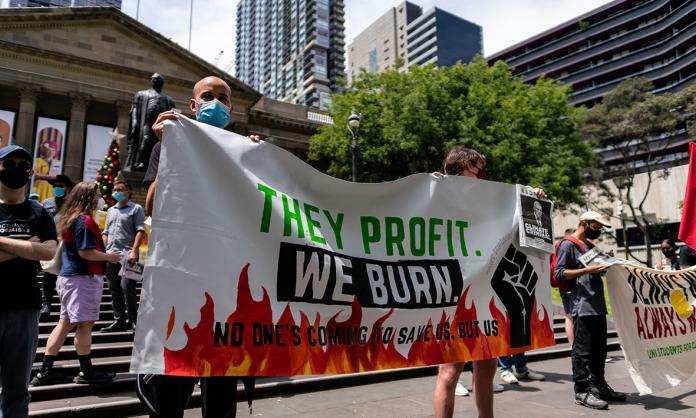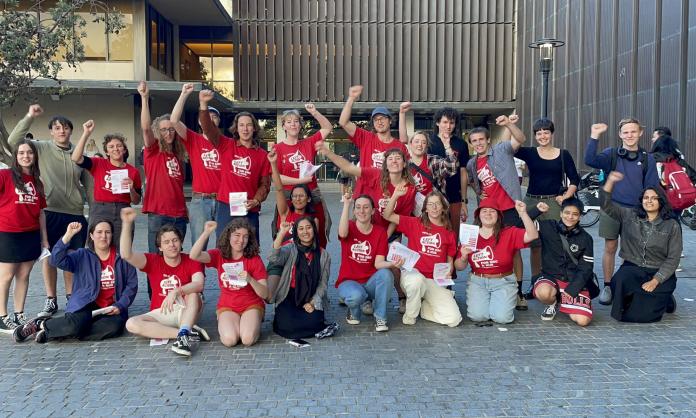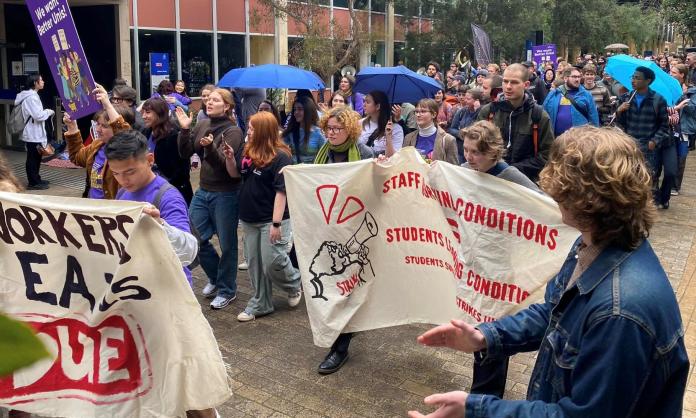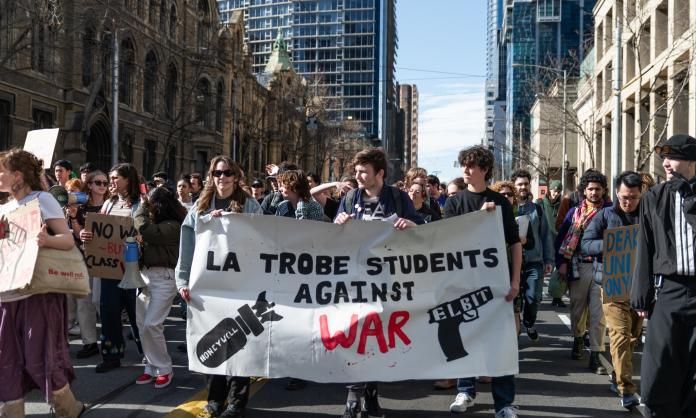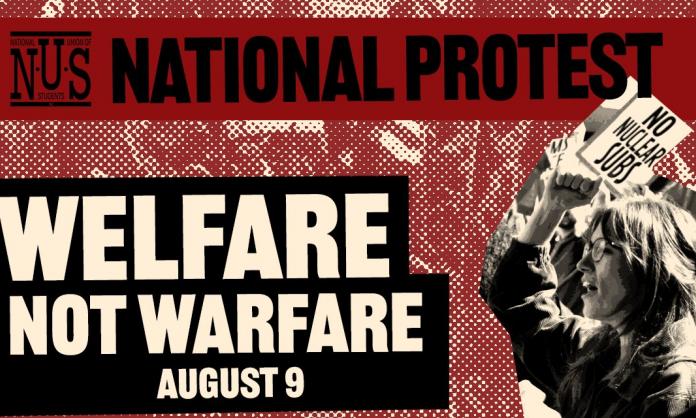We are in the grip of a climate crisis. Last year brought record-breaking heatwaves across Europe, drought in China that almost dried up the Yangtze River and floods in Pakistan that killed 1,200 people. It’s never been clearer that we need to shut down the entire fossil fuel industry. That’s why we’re organising a National Day of Action for the climate.
On 17 March, students around Australia will rally to demand a ban on new fossil fuel projects, the repeal of anti-protest laws and taxes on the rich to fund a transition to renewables. The rally has been called by the National Union of Students, the main political body representing university students in Australia.
There’s no shortage of reasons to fight. In the past few years, towns have been incinerated by wildfires and annihilated by floods. One in three heatwave deaths is attributable to the impact of climate change. Millions of people could become climate refugees as their homelands become uninhabitable. Entire islands are threatened by rising sea levels.
Governments insist that we don’t need to fight because they’re making progress. They point to the growth in renewable energy investment as proof of a “green transition”, or to the emissions reduction targets they have set. But the reality is that fossil fuel investment and carbon emissions continue to grow, and the climate targets aren’t worth the paper they’re printed on.
In Australia, the federal Labor government was elected promising climate action. You’d expect that, at a minimum, it would put a ban on all new fossil fuel projects. That would be inadequate because we need to shut them down, but it would be a start. Instead, there are more than 100 new projects in the pipeline. No number of “targets” or statements of concern can change this basic fact: Labor is making things worse.
At the same time, Labor is anxious to give the appearance of climate action. Last year, it legislated an emissions reduction target of 43 percent—a target that is unenforceable because all the legislation requires is that the government produce an annual report.
This year, Labor announced changes to Australia’s climate safeguards mechanism. At first, these look more substantial: they require big polluters to cut net emissions by 5 percent each year until 2030. However, companies can reduce their own “net emissions” by buying carbon credits—so they can meet the requirements even if their actual carbon output goes up. Minister for Climate Change and Energy Chris Bowen claims that the changes are “pro-climate, pro-industry, pro competitiveness”. But they do little to stop polluting corporations. Labor’s priority is Australian capitalism, not the planet we depend on.
There should be a backlash against Labor’s climate vandalism. Instead, it’s getting a free pass, thanks in large part to support from the liberal media. The Greens have at least criticised Labor, but their opposition is limited.
As Katharine Murphy and Adam Morton, writing in the Guardian, noted on 15 February: “Instead of seeking to limit the number of carbon credits businesses can use ... the Greens party room resolved on Tuesday to narrow the focus to securing a ban on new coal and gas”.
The Greens stress that they “want to work with the government”, rather than fight it.
If we’re to have any hope of saving the planet, we need to build public opposition to the Labor government. And that means we need to protest, not be lulled into complacency by the hope the politicians will sort it out.
The student strikes in 2019 shifted the global debate on climate. They gave millions around the world a taste of our collective power. The fact there haven’t been protests like that in years is a big reason that Labor feels confident to wreck the planet.
We can’t wish a mass movement into existence. The activist networks and culture that used to exist have atrophied because they’ve stopped organising protests. The leaders of groups such as School Strike 4 Climate and the National Union of Students have put all their hopes in the Labor Party rather than mobilising their supporters. The same is true of climate NGOs such as Australian Conservation Foundation.
But what we can do is fight, even when our numbers are smaller, to be a voice of opposition. We can break through the false sense that “the adults are sorting it out” and sound the alarm.
This is always how mass movements are built. The mass rallies for marriage equality in 2017 didn’t come from nowhere. They started as protests of dozens or hundreds of socialists and their supporters more than a decade earlier. The Black Lives Matter movement in 2020, the biggest uprising in US history, started years before with organising in Black communities against police murder. That’s why we need to get everyone we can onto the streets to protest.
Students can play a critical role in this. Students in Iran last year led a nationwide uprising against the dictatorship for the rights of women and minorities. In Australia in the 1960s, students were a key part of the movement against the Vietnam War, setting up radical radio stations, hiding draft dodgers in their union buildings and marching in their thousands alongside workers. Left-wing students challenged the conservative ideology of the Cold War by getting involved in the struggle for Aboriginal rights. Radical minorities of students have long been key to challenging the status quo and raising the banner of social and economic change.
That’s what we need right now. Anyone angry about the destruction of the planet needs to join the National Day of Action on 17 March. But don’t only come along—get involved with Socialist Alternative and build the rally by postering, leafleting and announcing it in your classes. We need more activists if we’re to have any hope in the future. And not just activists—we need socialists, people who aren’t afraid to be controversial, to disrupt business as usual, to fight for a better world even if it seems far off.
The alternative is to be “realistic”—to accept that corporations have to be appeased, that Labor is the best we can hope for. If you find you can’t accept that, join us on 17 March.
----------
The National Day of Action will take place on 17 March (3 March in Sydney). Follow the Facebook event for the details in your city.
National: fb.me/e/2s35gusfu
Adelaide: 6pm, Parliament House fb.me/e/3iBklkSiX
Brisbane: 6pm, King George Square fb.me/e/3TRLFbMho
Canberra: 1pm, Kambri at ANU fb.me/e/3aTqtmxX4
Melbourne: 2pm, State Library of Victoria fb.me/e/3heprR8hL
Perth: fb.me/e/2Ax3CVP5l
Sydney (3 March): 11am, University of Sydney fb.me/e/3ekIc6lDE
Wollongong: 12:30pm, University of Wollongong fb.me/e/2b0ljG7Gm




